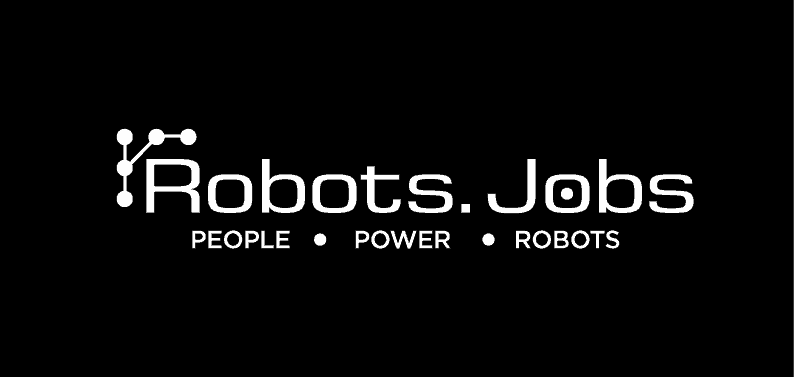Robots.Jobs addresses robotic skills shortage with a national approach
By Eugene Demaitre | February 6, 2019 | Source The Robot Report

While the predictions of massive job displacement because of automation have yet to be proven, the more immediate problem of filling positions at companies developing or building robots remains urgent. Robots.Jobs is a new resource for matching specialized talent with employers in robotics, artificial intelligence, and related technologies across the U.S.
“These emerging and growing companies have a common challenge, and that’s finding talent,” said Joyce Sidopoulos, innovation community manager at the Massachusetts Technology Leadership Council (MassTLC) and co-founder of MassRobotics and Robots.Jobs. “After speaking with companies in Boston, Pittsburgh, and Silicon Valley and searching the Internet, we couldn’t find a good and consolidated resource where students, job seekers, and hiring companies in these fields could find each other. Robots.Jobs aims to be the resource to do just that.”
In addition, people with robotics and AI skills are needed to meet industry demand. In manufacturing alone, the skills gap could grow from 488,000 unfilled jobs last year to 2.4 million open jobs in 2028, according to a study last fall by Deloitte and The Manufacturing Institute. Several observers have noted that good-paying jobs exist for people who can work with robots.
Stiff competition
“It’s a very competitive landscape out there, and finding senior-level talent that isn’t already happily employed is proving very challenging for some companies,” said Noah Roffman, co-founder of Robots.Jobs. “There is simply less talent right now than opportunities out there.”

Robotics startups need help competing with established tech firms for job candidates, notes SVR’s Andra Keay.
“The problem is very serious,” said Andra Keay, managing director of Silicon Valley Robotics (SVR). “Competition is stiff for people who are useful in robotics. They often have the exact skills that are in high demand at every major technology company.”
“Amazon, Apple, Facebook, Google, and Microsoft — they’re all experiencing difficulty hiring, and they’re all going to great lengths to recruit people,” she explained. “Unlike robotics startups, they have well-established hiring pipelines and lots of perks.”
“As robotics companies scale, a lot of the demand is on the software side, not as much on the hardware side,” Keay told The Robot Report. “Everyone needs good integration with customers’ systems. The Web back end, user interfaces, data analyses, computer vision — these [skills] are in the most demand right now, especially among automakers working on self-driving cars.”
The challenge for smaller automation companies is to reach roboticists and tech talent early.
“Networking events and academic conferences around robotics, AI, and machine learning have become much more enterprise-aligned, with a lot of recruiting,” said Keay. “There are semi-academic positions, and some firms are even encouraging people not to finish their degrees.”
Stemming the tide
Are STEM (science, technology, engineering, and mathematics) programs actually helping to meet the demand?

Generating people with advanced degrees in robotics takes time, says Velodyne LIDAR’s Frank Bertini.
“I estimate that less than 500 competent robotics engineers graduate every year,” said Frank Bertini, UAV and robotics business manager at Velodyne LiDAR Inc. “People who can think, design, build, and program by themselves.”
“If companies are having trouble hiring, they need to move to a major metropolitan area or increase their comp packages,” he said. “Prepare to offer at least $250,000 to a master’s or Ph.D.-level candidate with skills in machine vision, deep learning or machine learning, GPU programming, or LIDAR experience.”
“The pace of innovation is currently outpacing the supply of skilled talent coming up through the educational system,” Roffman said. “Finding people who have studied, researched, or worked on certain tasks can take a lot of time and legwork. Finding and sourcing talent will continue to be a challenge for some companies, and there are marketing and other costs involved in addition to these efforts.”
“People are saying that we should fix the [talent] pipeline, but that’s not making enough of a difference,” Keay said. “It’s not an education problem; it’s a resource problem. Computer science departments need funding and teachers. There has been a brain drain from universities.”
“Only about 100 or 200 Ph.D.s graduate every year,” said Bertini. The programs are really small because there aren’t many professors. That is another major issue: Nobody wants to teach deep learning for $100k a year when they can make $300k or $400k at Google.”
Changes in trade and immigration policies, such as the H-1B visa program, also affect global competition for robotics and computer jobs, especially with China.
“Historically, major tech companies in the Bay Area are highly dependent on computer science and engineering talent from other countries — particularly India — and that’s slowing down,” said Keay. “China has 100 times as many graduates in these fields and is developing incentives for people overseas. Many say the U.S. is no longer as competitive as China.”
“We only have to look at other countries to see the need for a robotics advocate in the U.S. government,” she said. “For example, Canada has made a multimillion-dollar investment in AI research.”
“There are qualified graduates out there, undoubtedly, which is why we see the need to build a centralized candidate database and why we see an opportunity to better connect these people to emerging companies that they might not immediately know about,” said Roffman. “We think it’s important for companies to recognize that they need to invest in training the next generation of workers, and the best way to do that is by hiring the less experienced and training them in-house.”
Robots.Jobs to help companies scale
Robots.Jobs launched last month, and it already features listings from several robotics, AI, and connected device companies. The site’s founders are working with regional robotics hubs such as SVR and the Pittsburgh Robotics Network. (The Robot Report is also a partner.)

“We want to be a central resource for companies to find talent, and the job board is one tool for doing so,” Roffman said. “Our founders come from the non-profit, community organizing world, and we want to continue to build Robots.Jobs in that manner: building community and human connections one day at a time, knowing that different tools will work for different companies and finding different types of talent.”
“Robots.Jobs is helping us to coordinate across the country,” Keay said. “I’ve run jobs boards before, and they’re often very localized and looking for more common skills, such as accounting or welding.”
“At SVR, our mission is to support the commercialization and innovation of robotics technologies,” she added. “We’re very much engaged with the problems that early-stage, growing companies face. One job of SVR and the other robotics clusters is to ameliorate the lack of resources and intelligence about operational systems.”
“If you’re a 10-to-20-person startup, you’ve probably only just onboarded an HR person who’s collaborating with accounting and doesn’t have a database of resumes,” Keay said. “You need a wide pool, especially when you’re looking for a high-tech, high-demand skill.”
Raising job hunter awareness
At the same time, Robots.Jobs enables job seekers to learn about posts outside their own locales.
“Everybody in robotics is hiring; the only difficulty is becoming aware of opportunities in robotics,” noted Keay. “There’s not necessarily word of mouth [from outside of Silicon Valley] that iRobot has openings.”
“One of the first benefits of Robots.Jobs that we see at SVR is being able to showcase more companies in the Valley than people may be aware of. All of our companies are hiring, and I’m telling all of them to put their listings on Robots.Jobs,” she said. “Clusters can help vouch for startups that may not survive in six months or be ready to compete with big companies. They need entrepreneurs and employees to succeed.”

Robots.Jobs will be adding features to help both job seekers and employers, says Noah Roffman.
“Our tagline is ‘People, Power, Robots,’” said Roffman. “We’re helping to build talented teams of diverse, skilled people will build the best products, whether overseen by established veterans or simply unified by great ideas, good timing, and people who are dedicated to the mission of their company.”
“In addition to the job board, we will be partnering on events, adding internship opportunities so younger roboticists can gain crucial experience, and doing more traditional recruiting with specific companies that are interested in that level of service where we leverage our combined networks,” he said. “We’ll eventually add tools so both candidates and companies can better tell their stories and showcase what makes them special.”
“It’s not just about national competitiveness. You could be born in Australia, educated in Austria, but looking for a job elsewhere,” SVR’s Keay said. “The best part about jobs in robotics is that you’re doing something that will have a huge impact, and it won’t be boring.”
“The purpose of the Robots.Jobs is to facilitate connections so the current pool of candidates can more quickly get to work building exciting, cutting-edge products,” Roffman said.

ABOUT THE AUTHOR
Eugene Demaitre
Eugene Demaitre is senior editor at The Robot Report. Prior to working at WTWH Media, he was an editor at Bloomberg (now part of BNA), Computerworld, TechTarget, and Robotics Business Review. Demaitre has participated in robotics webcasts and conferences worldwide. He has a master’s from the George Washington University and lives in the Boston area.

